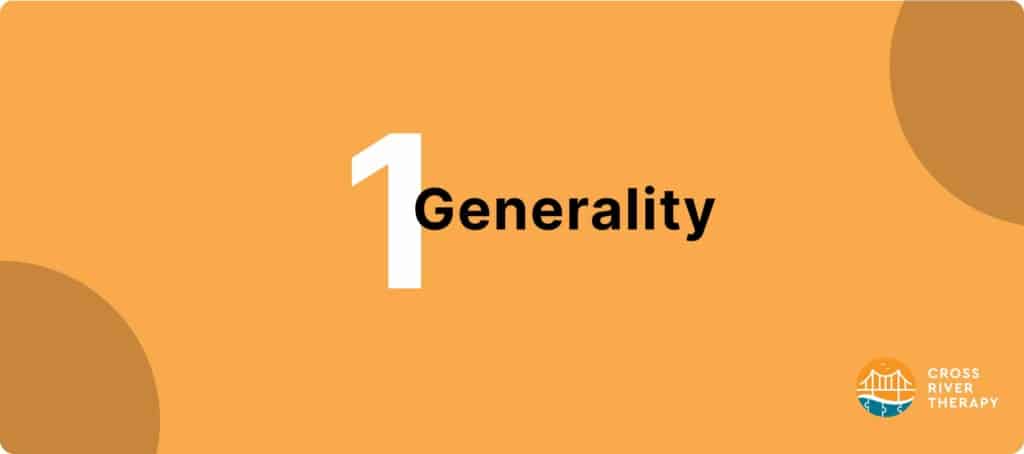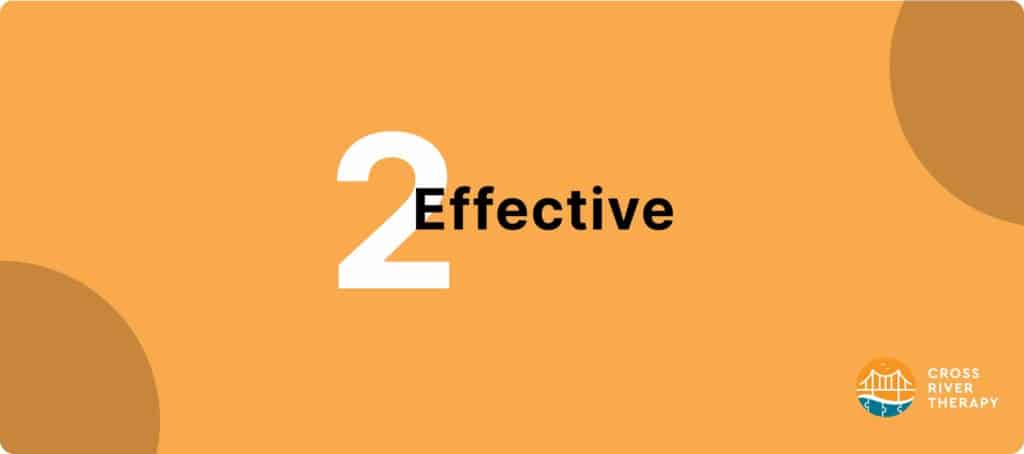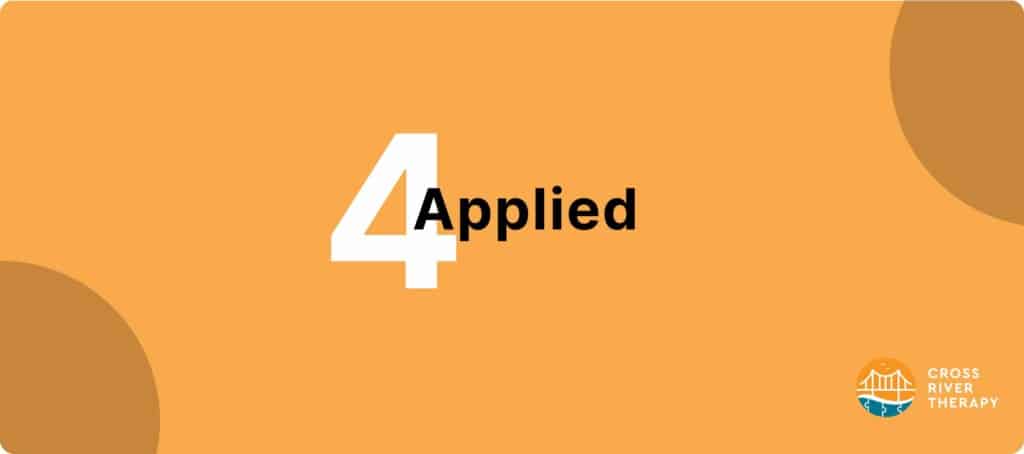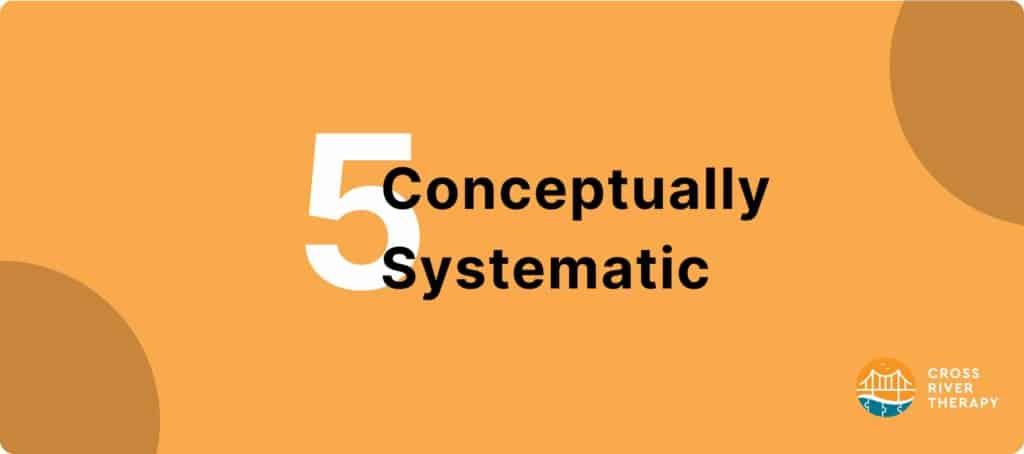7 Dimensions Of Applied Behavior Analysis (ABA)
Learn about the 7 dimensions of ABA therapy and why they’re important. Keep reading!

What Are The 7 Dimensions Of ABA?
- Generality
- Effective
- Technological
- Applied
- Conceptually Systematic
- Analytic
- Behavior
Autism is a complicated disorder that has been rigorously studied to find better ways and methods to treat it.
Applied Behavior Analysis therapy is commonly provided to people diagnosed with autism.
It’s prescribed for autistic people of all ages, from toddlers to the elderly.
The therapy is grounded on seven fundamental dimensions, which in their entirety make up a set of rules that therapists practicing ABA treatment should utilize and be familiar with.
However, those who have access to such information don’t have to stay at an ABA center or pediatrician’s clinic
Parents are also encouraged to learn the dimensions when at-home therapy is conducted with small children. The goals and individual’s treatment should be planned according to each dimension, which are:
- Generality
- Effective
- Technological
- Applied
- Conceptually Systematic
- Analytic
- Behavior
Behavior analysts use them to achieve progressive change in patients, helping them and their families understand the environment that might be a catalyst for unwanted reactions, such as tantrums.
Each dimension is detailed below, helpful for understanding how important they are and how it relates to ABA therapy.
1. Generality

Generality is used to express behaviors that must be written down or put into a plan with a method that applies to being used with other people at a later point in time.
Where it can be used doesn’t matter since it’s a generality, as the term expresses.
Patients are worked with to help maintain the behavior they learn about and are encouraged to adapt to their lives, taking that knowledge with them after a long time passes after ABA.
ABA treatment is done in settings that are very clean and with few items that would cause a patient to lose their focus.
Even with programming happening in this environment, the therapy is best when conducted in a way that’s in line with the individual patient’s habitat, or a setting they find comfortable.
Doing this guarantees that the exhibited behavior is standardized in multiple settings other than where the treatment is done.
This is what’s known as a generality. It’s strongly recommended that the patient maintains contact and interaction with the same staff member for generality to work to its fullest potential.
2. Effective

ABA treatment is all about reaching goals. Without a clear goal, the treatment would be destined for failure.
Fortunately, ABA therapy cannot work without having a goal for the patient to reach, one that’s clearly defined and easy for the patient, and their guardians to comprehend.
Additionally, goals work best when they are a reflection of the patient’s environment or even their culture.
When going about this therapists can ask themselves if the intervention is working in this regard, as they try to see the patient reach their goal.
Other relevant questions that can help in finding the effectiveness of treatment are as follows:
- Is data going in the direction that it should be going?
- Is it judging the data accurately?
- What additional steps can I take to ensure that the patient reaches their goal?
Such questions will eventually be answered as progress is made.
They’re also found out by analyzing the collection of data that are made during the timespan of the patient’s treatment.
Overall, all interventions for ABA therapy should be effective in creating changes that are most able to bring about behavioral alterations for the betterment of patients.
3. Technological

This dimension is defined as every intervention in a patient that’s relied upon is understood and easy to identify.
The intervention should be written plainly, to be easily remembered by anyone that must read the material.
When everyone can understand the goals, they can be implemented better, with more people taking the initiative to reach a goal without being told what to do.
The technological dimension essentially boils down to teamwork, how effectively therapists or parents can work together in understanding treatments, and whether or not everyone is on the same page.
The only way to be sure that others identify interventions is for everyone to maintain focus on communication.
How this communication is done can be left up to the people conducting ABA therapy.
Keeping instructions concise and easy to understand, without too much technical jargon when it isn’t needed, is the right pathway to taking advantage of the technological dimension.
Many therapists consistently discuss this dimension with their team and parents, particularly when autistic children receive care at both a center and at home.
4. Applied

Applied refers to instituting ABA therapy in a societal form, past its research phase in a study.
Therapists place their focus on this dimension’s principles so that particular behaviors will change, those which are important to an autistic patient’s behavior in a social setting.
With this dimension, the goals are chosen based on what’s more important to an individual.
These socially important behaviors are studied by therapists to find out which are part of their individuality.
Skills are mapped to see those can help them function well in the environments they find themselves in, even when going into settings they’re unfamiliar with.
This kind of intervention aims for social validation, where lasting change is made and kept over a long period.
To sum it up, the environment is pertinent to understanding how ABA treatment is given to patients, and how therapists can research it to find ways to make them exhibit behaviors that help rather than hurt them.
An applied dimension is especially useful in children and teenagers, but also adults.
To give an example of this dimension, children with autism sometimes exhibit tantrums when they’re unable to communicate how they feel around their parents, teachers, guardians, and therapists.
Finding the target behavior to combat this is easy to do with an understanding of applied dimensions.
They can be taught how to speak what they want or need from people, a goal that’s done through validating their social setting.
Once the goal is met, an immediate change in the child’s life and that of their parents and peers would occur.
When interventions like this are done, therapists should understand how targeting such behavior alterations can change things for them, and how it can help them become happier.
5. Conceptually Systematic

ABA therapy sessions that are conceptually systematic help give success to interventions that are relied upon, and that stay relevant to the overall conceptual end game for the ABA treatment that’s administered.
Behavioral goals should be technological and give contributions to the entire process of all patients’ treatment.
Behavior therapists pinpoint behaviors in their patients.
However, there’s always the chance of therapists assigning treatment plans that don’t help out individual patients according to their needs.
Since a conceptually systematic dimension is predicated on research, it helps the focus remain on what’s important, which is maintaining the fundamentals of ABA treatment.
Straying too far from what a patient need for their intervention can prolong their treatment by more than what they need.
This dimension helps prevent that from happening, raising the likelihood of successful therapy.
6. Analytic

When therapists are analytic, it means that they look at data to make fact-based choices concerning their therapy. There are certain times in which the data is taken, mostly after different interventions.
When scrutinized, changes are made when there is no data that points to any negative change in a patient.
This modification can help the treatment stay on track to reaching a patient’s goal.
It also helps in proving harmony in the intervention and positive behavior that’s shown. Therapists wish to boost such behaviors while lowering others that are wanted or needed.
7. Behavior

On its own, behavior is gauged so that it can be altered at a later date in time.
When behavior is seen and studied, it can be analyzed with data and changed.
The word behavior in this sense doesn’t necessarily mean that it’s all unwanted behavior. It can be ordinary, or even needed for a goal to be reached.
Therapists look for ways to make some behaviors occur more frequently and do away with others that are unwanted.
How To Apply The 7 Dimensions Of ABA
When the seven dimensions are applied to ABA therapy, therapists are sure to give treatment to patients that are backed up by lots of research from professionals that have studied autism for many years.
These dimensions can also assist therapists immensely, helping them to better observe and look for signs of progress in patients that may have been ignored.
One of the greatest benefits of ABA therapy is its use in compartmentalizing the interventions to help them align with the needs of every patient so that each one received treatment that’s best for their attitude and behavior characteristics.
It has assisted many specialists in pinpointing skills and staying on track of them as treatment progresses.
These dimensions can be studied by parents as well, a good way for them to apply ABA therapy to their children as they grow and learn about the importance of good behavioral and social skills.
References

Have Any Questions?
Whether you're curious about our services or need support, we're just a click away. Reach out or check our FAQs for quick answers.

